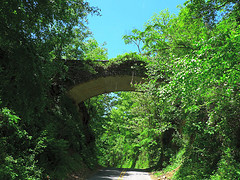Part i: Introduction; Part ii: Types of Folklore and the North Carolina Folklore Society; Part iii: North Carolina Folktales and Storytellers; Part iv: Legends, Animal Tales, and Superstitions; Part v: References
See also: Brown Mountain Lights; Conjure; Devil's Horse's Hoofprints; Devil's Tramping Ground; Folk Music; Ghosts; Maco Light; Madstones; Root Doctors; Southern Folklife Collection; Wampus.

In North Carolina, a state that puts great emphasis on oral traditions and family customs, the value of folklore and folktales is impossible to overstate. As the collected narrative culture of a group of people through many generations, North Carolina folklore is remarkably complex, representing a huge array of different narrative, traditional, and cultural styles. It may encompass such disparate forms as Cherokee legends, ballad singing among residents of a remote mountain valley, family ghost stories, religious messages on truck dashboards, or even modern-day jokes transmitted on the Internet. Folklore, unlike other cultural forms, usually circulates among members of a group or community in informal ways often not involving printing or other forms of recording. This informality emphasizes the importance of interpersonal relationships within the community, a key to the importance of folklore in creating and maintaining group identity. Sometimes seen as involving only "old-time" customs or stories, folklore is also the constant cultural interplay in the melting-pot environment of modern North Carolina, continuing to produce new folktales and folk customs that will exist for decades to come.